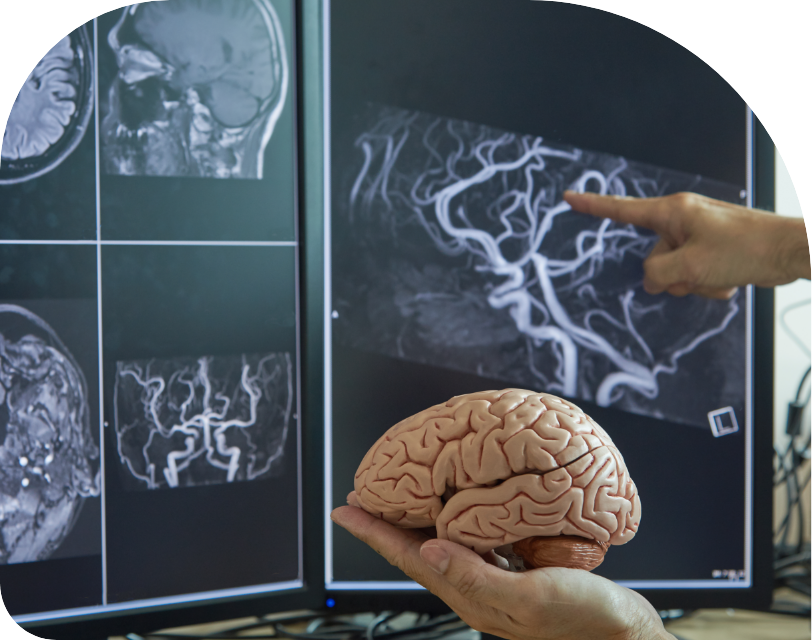Benign Intracranial Hypertension

What is benign intracranial hypertension?
Benign Intracranial Hypertension, also known as idiopathic intracranial hypertension (IIH) or pseudotumor cerebri, is a neurological condition characterized by increased pressure inside the skull without the presence of a brain tumour.
It primarily affects women of childbearing age, although it can occur in anyone, including children.
The exact cause of benign intracranial hypertension is not fully understood, but it is believed to be related to the body’s inability to properly regulate cerebrospinal fluid (CSF) pressure. CSF is the fluid that surrounds and cushions the brain and spinal cord. When there is an imbalance in the production or absorption of CSF, pressure can build up in the skull, leading to symptoms associated with the condition.
Some potential risk factors for benign intracranial hypertension include obesity, certain medications (such as certain antibiotics, oral contraceptives, and vitamin A derivatives), hormonal imbalances (such as excess production of estrogen), and certain medical conditions (such as sleep apnoea, hypothyroidism, and systemic lupus erythematosus).
What are the symptoms of benign intracranial hypertension?
The most common symptoms of benign intracranial hypertension include:

- Headaches: Often described as severe and persistent, which may be worse in the morning or when lying down.
- Vision problems: Including blurred vision, double vision, temporary episodes of blindness, or visual disturbances like seeing flashing lights or auras.
- Tinnitus: Ringing in the ears.
- Nausea and vomiting: Especially when accompanied by severe headaches.
- Neck and shoulder pain: Often associated with the headache.
- Papilledema: Swelling of the optic disc in the eye, which can be detected during an eye examination.
A bleeding AVM is a life-threatening emergency and requires immediate treatment.
If benign intracranial hypertension is suspected, it is important to consult with a healthcare professional. They will likely perform a thorough physical examination, including an evaluation of the neurological function and vision. Imaging tests, such as a brain MRI or CT scan, may be ordered to rule out other potential causes of the symptoms.
How is benign intracranial hypertension treated?
Treatment for benign intracranial hypertension aims to reduce the pressure inside the skull and alleviate symptoms. Depending on the severity of the condition, treatment options may include:
- Medications: Diuretics may be prescribed to help reduce the production of CSF and lower intracranial pressure. Other medications, such as acetazolamide, may also be used to decrease CSF production.
- Weight loss: If obesity is a contributing factor, losing weight may help reduce symptoms.
- Drainage procedures: In severe cases, when medications and lifestyle changes are ineffective, a surgical procedure called optic nerve sheath fenestration, or a CSF shunt placement may be considered to alleviate pressure on the optic nerve and reduce intracranial pressure.
- Regular monitoring: Regular follow-up appointments with a healthcare provider are necessary to monitor symptoms, check vision, and adjust treatment as needed.
It’s important to remember that benign intracranial hypertension is a chronic condition that requires ongoing management. With proper treatment and monitoring, most people with this condition can experience symptom relief and prevent complications.
